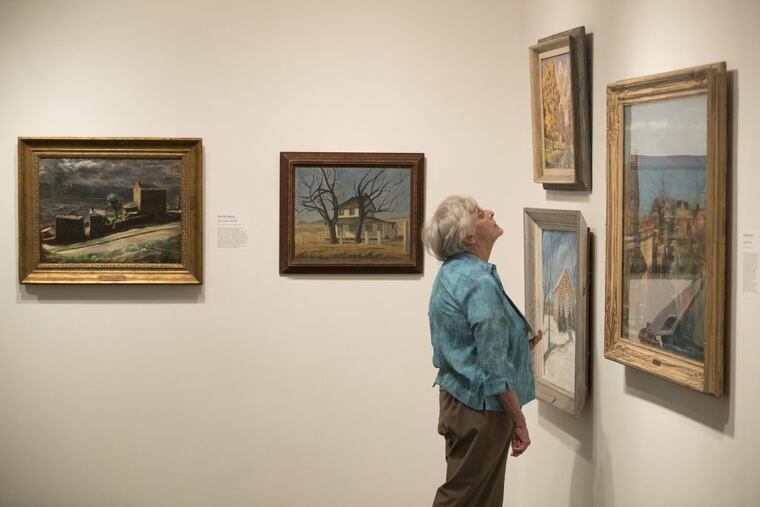Controller: Why don't Philly kids deserve artwork?
City Controller Alan Butkovitz said an exhibit that includes some pieces from the Philadelphia School District's art collection was just a "partial victory," and said that the art should be permanently moved out of storage. It has been kept in storage in an undisclosed location since 2004.

Philadelphia City Controller Alan Butkovitz is glad that 15 significant paintings from the Philadelphia School District's collection are now available for public viewing, part of an exhibit at the James A. Michener Art Museum.
But Butkovitz, who has long been interested in the whereabouts of hundreds of paintings, antiques, and artifacts removed from city schools in 2004, said on Monday that the exhibit represented only a "partial victory" and renewed his call for the district to move the art out of storage permanently.
Mystery has surrounded the collection, which was removed from city schools more than a decade ago, over winter break when no teachers or students were present. The art was too valuable to be hanging unsecured, officials said at the time. Its estimated value has fluctuated wildly — from as much as $30 million to less than $1 million. Most of it still sits in storage at an undisclosed facility for which the district pays $8,823.40 annually.
At various points, leaders debated selling off all or part of the collection to fund schools; ultimately, they concluded that the money the art could fetch wasn't significant enough to offset the historical and educational value of the work.
(Art has been returned to Central High, which has a climate-controlled, secure place to store it, officials said.)
"It is incomprehensible to me that they can't find a way to put these paintings back in schools, and find a way for them to be safe," Butkovitz said. "They're basically saying our children cannot be trusted to be in buildings where there's art."
District officials have said that they want the art to be accessible to city students. Deborah Klose, the director of arts education, said she would like to explore putting together a traveling collection or show of Philadelphia's works, and to allow schools that can't guarantee the safety of the artwork to have reproductions made.
Megan Lello, a district spokeswoman, said the school system has been working for several years to find ways to appropriately display its "important collection."
"The cost to store and protect these historic works of art in a modern, climate-controlled facility is relatively small, and is worth it to ensure this collection remains in proper condition," Lello said in a statement.
Butkovitz said the district deserves little credit for the Michener exhibit, which runs through Jan. 7. Since the "comic opera, Marx Brothers-fashion" removal of the artwork in 2004 — movers violated industry standards for transporting the work, offering no receipts, he said — the art situation has been a "disaster."
"It illustrates a stubborn lack of accountability," said Butkovitz, a frequent district critic who has completed audits of the artwork since 2006. "They're doubling down on the misbehavior of the past."
The controller also views dubiously a district claim that art that was once unaccounted for has been discovered and properly cataloged.
"You have the same people responsible for this fiasco saying that now everything is there, everything is fine," Butkovitz said. "Shouldn't there be independent art experts verifying that?"
Butkovitz said the schools system ought to partner with the city's tourism agencies and art organizations to explore ways to display the work permanently. Or, he said, maybe it should rid itself of the work altogether.
"They really should get themselves out of the art custodianship business," he said.